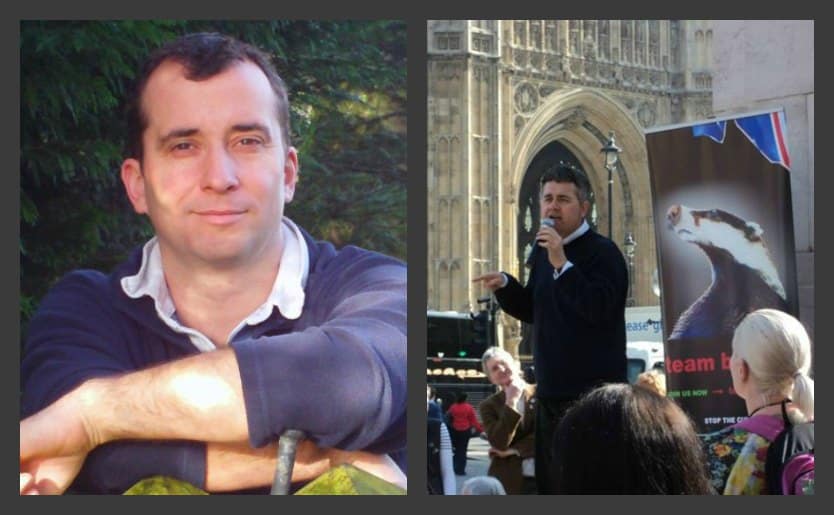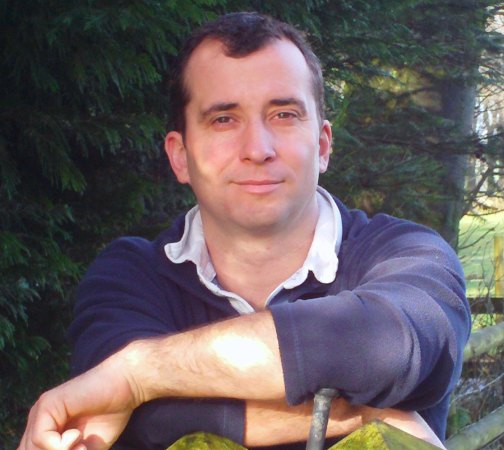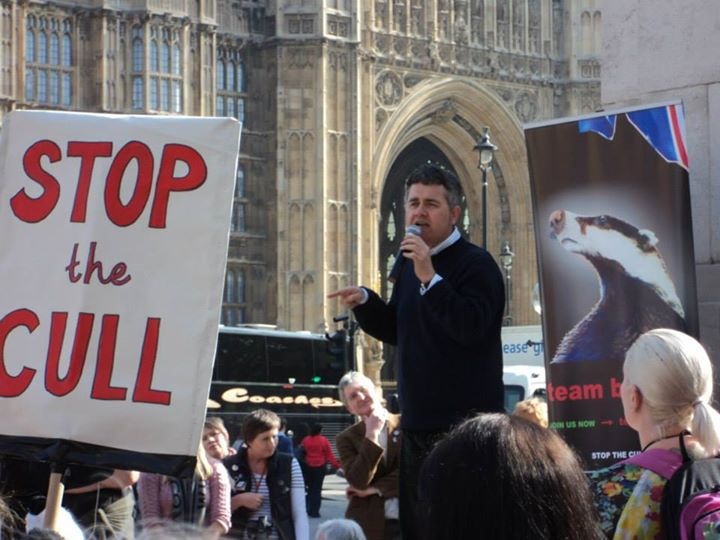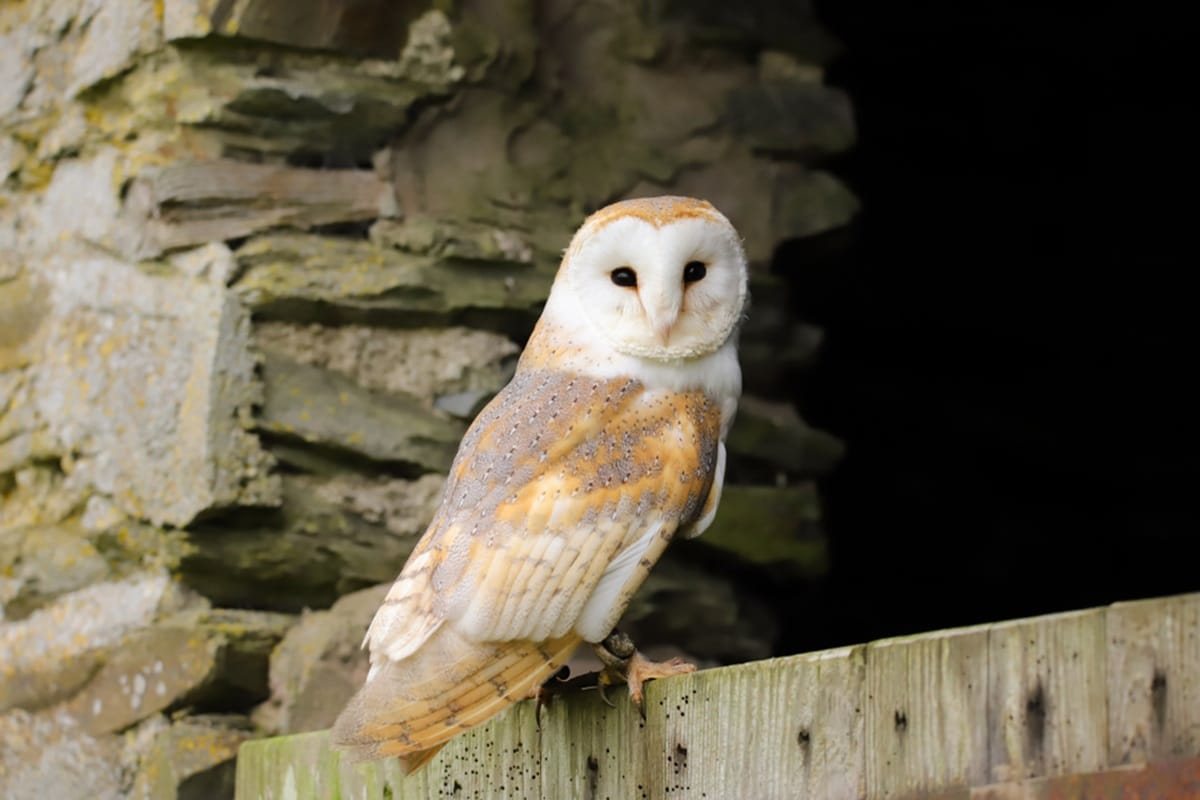
The badger-culling scheme has been a contentious topic since last year, and, while you may not have heard as much over the past month, the debate is still going strong. The arguments we see for or against often look at one side of the argument, or look at the argument itself, rather than giving a balanced opinion from both sides. We’ve tried to do the latter by hosting the opposing opinions of both James Small, a former county chairman for the NFU, and Dominic Dyer, CEO of the Badger Trust. Without too much introduction, here are the two pieces, starting with James Small. We’d love to hear what you think of both ideas in the comments. Please try to keep an open mind until you’ve read both points of view, and let us know what you think.
Reducing the badger population in bTB endemic areas is the correct action as part of a wider overall strategy to control TB in both cattle and wildlife.
James Small, Former County Chairman, National Farmers’ Union

I’m a third generation livestock farmer in Somerset. Working in partnership with my family on our extensive, grass based farm rearing lambs and beef cattle (rare breed). The farm has been in environmental stewardship for over 15 years now. We also provide grazing services for large land owners including organisations such as the Somerset Wildlife Trust and the National Trust, helping them to meet their environmental stewardship obligations. I was the National Farmers Union County Chairman for Somerset in 2012/13 and am still involved with the NFU. Bovine TB (bTB) is one of the biggest threats facing our beef and dairy industries today. The disease is slowly creeping across the country and there is no cure for it. Last year, over 32,000 cattle were slaughtered after testing positive. In the 1960s and 70s, large tracts of the UK were declared TB free, with only a few small pockets of the disease left in Cornwall and Gloucestershire (both within cattle and wildlife, predominantly badgers).
So how did we succeed in nearly ridding ourselves of this disease, when we don’t seem to be able to do it now, despite the many scientific advances in recent years? In my opinion, it’s because we had a national plan, a coordinated approach to tackling the disease, and a determination to complete the job. The plan for tackling bTB contained two main elements – cattle control measures and wildlife control measures. Today we have the basis of a similar plan in the form of the Government’s 25-year TB eradication strategy, which sets out a plan for England to be TB free by 2038.
This strategy is a welcome starting point but, if it is to be implemented successfully, it needs clear vision and continuity. We need to take the politics out of this issue if we are going to succeed. We cannot allow party politics to interfere with tackling a disease that is devastating thousands of farming families across large parts of the country. Under the Government’s 25-year strategy, England is divided into three areas – high risk (where a relatively high proportion of cattle herds are infected by bTB), the edge (a buffer zone between the high risk and low risk areas where the disease is advancing), and low risk (where there are few cases of bTB and no reservoir of disease in wildlife).
Cattle in the high risk and edge areas are tested annually and any animal that tests positive for bTB is immediately removed from the herd and slaughtered to prevent infection. The farm is closed down from trading and the entire herd must pass two consecutive TB tests, 60 days apart, before restrictions are lifted. If the whole herd passes another test six months later, it goes back onto annual testing. In the high risk area, covering the South West and most of the West Midlands, bTB is endemic.
In these areas it is vital that the disease is dealt with in badgers as well as cattle, otherwise infected animals will simply continue to pass the disease to uninfected ones. It is widely accepted that badgers can infect cattle, and vice-versa, so it makes no sense to only deal with one half of this cycle of re-infection. Only by dealing with it in both will we stand a chance of controlling and eradicating this disease.
No one is saying culling alone will solve the problem, and no one is saying culling should be carried out all over the country, but culling is necessary in areas where the disease is endemic, if we are going to get on top of it. In the edge areas, badger vaccination is being looked at and could have a role to play in stopping the disease spreading further, but vaccination won’t cure a diseased badger, which is why vaccination of badgers in endemic areas at currentl population levels won’t stop bTB.
Cattle vaccination could have a role to play as well but is still a long way from being available – at least ten years – and that’s once a successful vaccine has been approved, so this option simply isn’t available at the moment. Better tests for the disease could also play a role. The current skin test for cattle is 80% accurate (it finds eight out of every ten infected cattle), but within those 80% found, it’s 99.9% accurate (eight out of eight will have TB). It’s the best test we have and is recognised around the world.
Other tests exist but they are not, on balance, as good or specific as the skin test. There is no recognised test for the detection of TB in a badger other than a blood test or post mortem. So if you trap a badger you cannot test it immediately to see if it is free of infection or not. I firmly believe that reducing the badger population in bTB endemic areas is the correct action as part of a wider overall strategy to control TB in both cattle and wildlife.
There are examples from around the world (New Zealand, Ireland) that show this policy works. TB transmission cannot be solely down to cattle movements, or else the spread would have been far more rapid and simultaneous over all the country. But this is not the pattern we see. It is rather a slow, wave-like North-easterly creep. Wildlife controls in isolation simply won’t work. But they must be an essential part of any strategy to get rid of this disease in endemic areas. Healthy cattle and healthy wildlife must be our ultimate goal, but it will not be an easy road. ENDS
It’s time David Cameron stopped playing politics with our wildlife and used his big society to tackle the threat of bovine TB
Dominic Dyer, CEO Badger Trust & Policy Advisor at Care for the Wild

The badger cull was never about science or indeed effective disease control, it was a desperate attempt by David Cameron to shore up support for the Tory Party in rural communities ahead of the 2010 election, by ensuring strong support for pro badger cull Tory candidates from the National Farmers Union and Countryside Alliance.
The policy could only be delivered by a politician who was closely aligned to both these organisations and comfortable to spin a web of deceit and misinformation to MPs, media and wider public. Caroline Spelman was not this type of politician, but Owen Paterson was perfect for the job. From his first day in office, Owen made it clear to his senior officials that the cull policy was to be implemented no matter what the costs or opposition from conservation and wildlife groups.
He put his civil servants to work developing a pro cull propaganda machine to paint a highly inaccurate picture of the scale and cost of the bovine TB crisis and the need to eradicate badgers to get it under control. To start with, DEFRA did all it could to blame badgers as being the prime cause of TB in cattle. In fact the vast majority of TB infections are between cattle, which are often housed in large numbers in sheds and moved around the country (over 13 million a year) with poor biosecurity, control movements and TB testing regimes. In reality, the badger has been the victim of industrial pollution on a huge scale from the most intensive livestock industry in Europe.
It’s the cattle which have infected the badgers with TB and despite claims from Owen Paterson that the transmission rate from badgers to cattle is 50%, (figure based on a mathematical model) the true level of TB transmission is likely to be in the region of 5%. We were then told by DEFRA that bovine TB is the biggest crisis facing the UK farming industry and unless we kill badgers it will end up costing the tax payer over £1billion in the next decade. In reality the level of compensation paid to farmers for cattle prematurely slaughtered due to TB runs to around £40 million a year, over £10 million of which is recovered by the treasury as a result of the sale of TB meat into the food chain, without labelling or traceability.
Over the last year, these costs have started to decline as the number of cattle slaughtered for TB has dropped by almost 10%, as a result of tighter biosecurity, control movements and TB testing systems forced on the UK Government by the European Commission. Owen Paterson also made it a key goal to demonise badgers by spreading false fears over the level of TB within the badger population, by regularly talking in the media of super excreters exploding with disease and infecting cattle at a rapid rate.
In reality of over 11,000 badgers killed in the Randomised Badger Cull by the last Labour Government, only 1.65% fell into this category with a further 15% with low level TB, which would not impact on the health of the badger during its short lifetime, or make it a major risk of disease spread to other badgers or cattle. This is the key reason why DEFRA has not tested any of the badgers killed during the pilot culls for TB, as they know the results would show a very low level of disease, which would not justify their plans to eradicate large numbers of this protected species from many parts of the country.
In Wales, where thousands of badgers have now been vaccinated against TB during the past three years, none have needed to be removed and euthanised because they were visibly sick with TB lesions, despite being in a TB hotspot area. Then we come to the cost justification for badger culling over badger vaccination. In the run up to the badger culls in 2013, Owen Paterson did all he could to undermine the Welsh government badger vaccination programme on the ground of both cost and effectiveness.
He claimed that free shooting of badgers at night would be the most effective and humane way of removing large number of badgers at a much lower cost than trapping and vaccination. However, we have now learned from Freedom of Information Requests that, in the initial 6 weeks of the pilot culls in 2013, only 24% of the estimated badger population in Gloucestershire and Somerset were killed by free shooting.
The vast majority of badgers killed in both pilot culls were by government employed trap teams, with higher costs than the Welsh government vaccination programme. Which brings us to the key issue of the overall costs of the pilot culls and a national rollout programme for badger culling. On 6 January 2014, Care for Wild released a report based on Freedom of Information Requests, Parliamentary Questions and leaked documents, which estimated an overall cost for the pilot culls of £7.3 million or over £4,000 per dead badger.
In the days that followed, these estimates were backed up by the BBC and the police, who confirmed their costs for the badger cull pilots, exceeded £2.5 million alone. Any justification that was left for the disastrous badger cull was blown apart by these huge costs. It is now widely accepted that a four-year badger cull in Gloucester and Somerset would cost in the region of £20 million, but would only deliver around £2.5 million benefit to the tax payer in terms of reducing the spread of bovine TB.
If, as Owen Paterson boasted to the Sunday Times in 2013, badger culling was rolled out to 40 new areas of England over the next 4 years, the overall cost could exceed £800 million. David Cameron’s gamble to appoint Owen Paterson as Environment Secretary to deliver the badger cull blew up in his face. He had no choice but to sack him in his recent Cabinet reshuffle as he had become political poison in the party. In replacing Paterson, the Prime Minister had the opportunity to appoint a new DEFRA Secretary of State who listens to public concerns on protecting wildlife, puts science not politics back at the heart of DEFRA policy making and finds a new way forward in tackling bovine TB, which protects both the future of our wildlife and farming industry.
However, he chose to appoint the inexperienced Liz Truss who has continued on the path of pushing ahead with the disastrous badger cull policy, in the face of huge opposition without any independent monitoring. A recent Mori Poll confirmed that opposition to badger culling was the 5th most common cause for complaint to MPs during the past 12 months, ahead of issues such as education, childcare and taxes. Over the past 12 months, tens of thousands of people have marched against the badger culls in 25 towns and cities across the country, in what has become the largest rolling wildlife protection campaign in Europe.
Over 300,000 people signed a petition against the policy, two debates have taken place in Parliament and the lack of independent monitoring for the cull has been subject to a Judicial Review challenge by the Badger Trust, which will now go before the Court of Appeal on the 9th October. The Labour Party can see where public opinion is going on this issue and have made a clear commitment to stop the pilot badger culls and any national rollout should it form a government in May 2015.
The Liberal Democrats have also made it clear they no longer want to be associated with a national badger culling policy. Killing badgers has become so sensitive within the Tory Party that David Cameron advised Liz Truss to avoid mentioning the badger cull policy at all in her first speech to the Tory Conference in Birmingham this week. But delegates entering the conference hall still had to run the gauntlet of anti- badger cull protesters at the start of the conference on Sunday.
On the fringe, Tory MP’s such as Anne Main were calling on David Cameron to accept that badger culling has no scientific, economic or animal welfare justification and will make no significant contribution to lowering bovine TB. Looking to the next election, many Tory MPs admit to being increasingly concerned by how badly badger culling goes down with their constituents. Its time David Cameron realised that British people are uniquely caring and compassionate towards wildlife and will not allow a protected species such as badgers be destroyed due to backroom deals with land-owning and farming interests.
Cameron should now dust off his plans for the Big Society, which still has merit, and make badger vaccination a key Big Society Project. Thousands of people are willing to volunteer to be trained as lay vaccinators and work with farmers and landowners to vaccinate badgers across the country to reduce the spread of the disease in both badgers and cattle. This will not only prove a more popular policy with voters, but it will the right thing to do for farmers, tax payers and the future of our precious wildlife.
Do you agree with one of these sentiments, or can you see valid points in both sides?
We’d love to hear your opinion.





